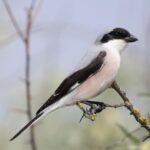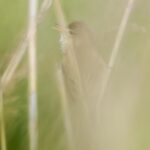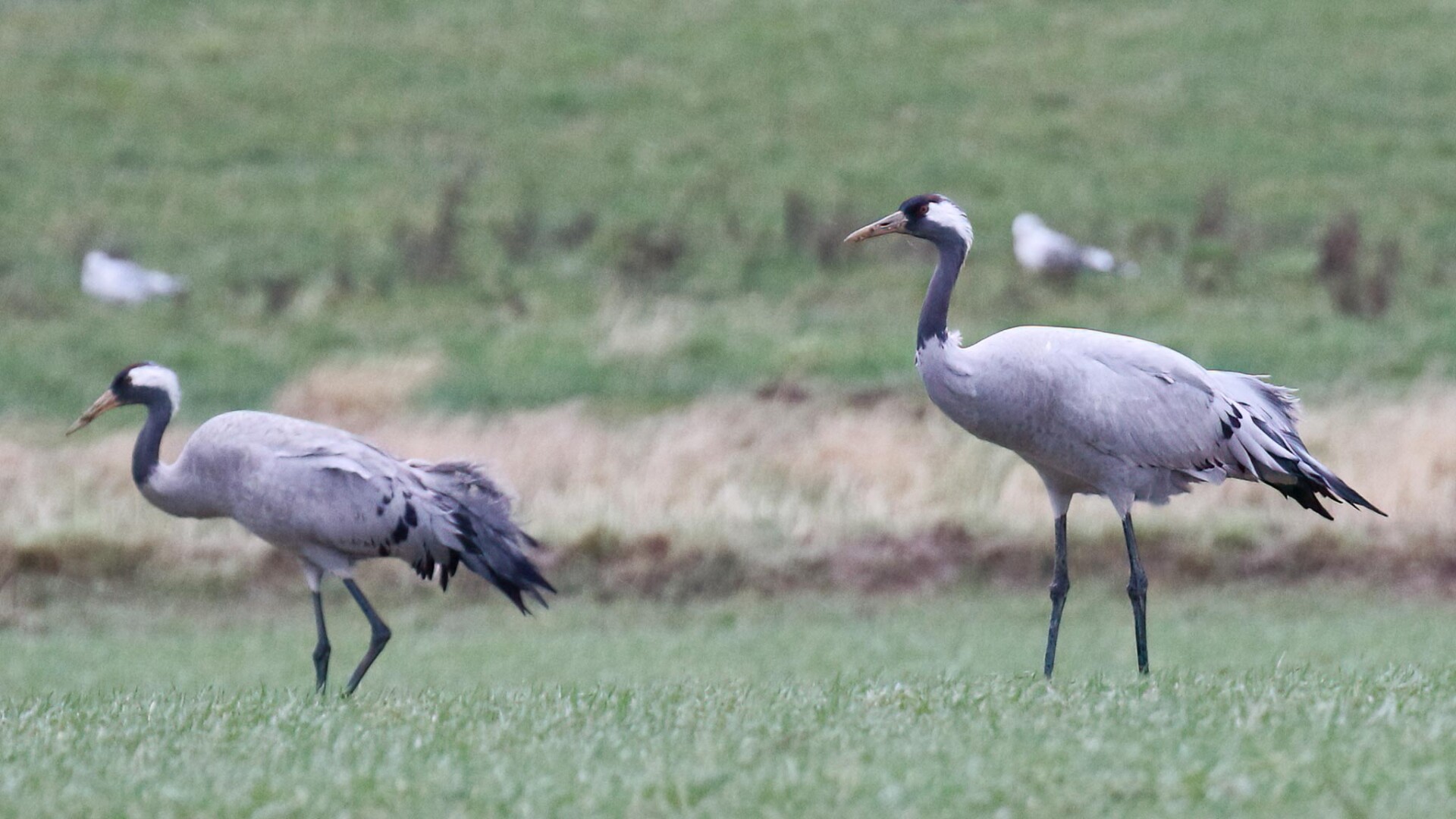It was an odd day weather wise – cloudy, with a moderate breeze in the morning, but very hot and muggy, topping out at 27C on the coast, and spits of light rain briefly a couple of times. Thankfully, it didn’t stop us from getting out and having a good day’s birding. We spent the day in NW Norfolk.
On our way up to the coast this morning, we dropped down via Choseley. A rather chunky bird on the wires by the road was a Corn Bunting. We stopped and had a look – we could see it was singing, but we couldn’t hear it from where we were. Then it dropped down into the field. A nice bird to start with.
Our destination for the morning was Titchwell. As we got out of the minibus in the car park, a family of Kestrels circled overhead calling. A Blackcap was singing in the trees.
As we made our way in, we stopped to look at the feeders by the Visitor Centre. It was a hive of activity today – Blue Tits and Great Tits coming and going, several yellowy juveniles, Chaffinches and Greenfinches, a Dunnock, Robin and Blackbird. A family of Jays moved through the alders just beyond, and one came out and landed on top of one of the birdtables.
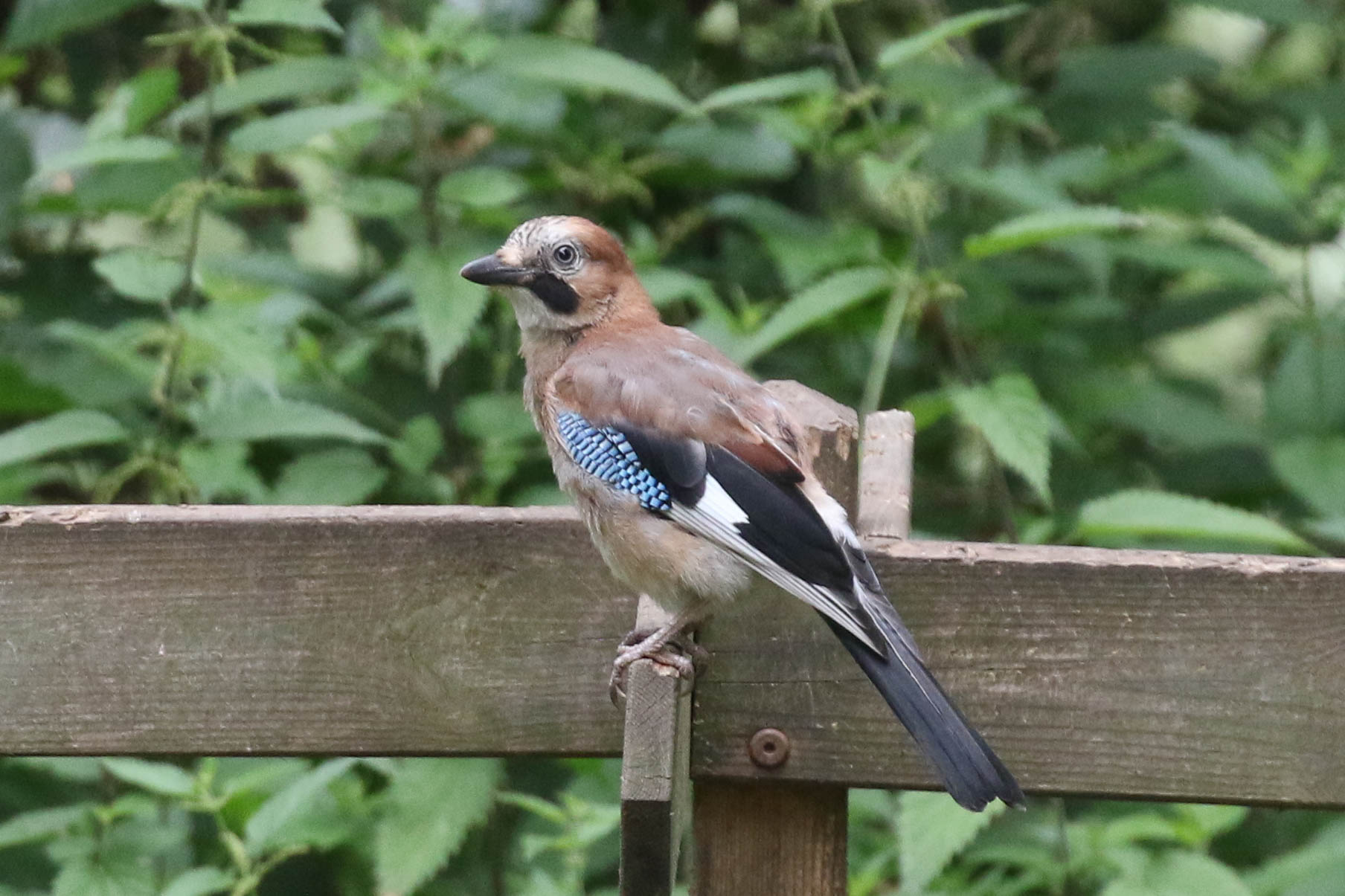
The Jays disappeared through the trees and as we walked down the main path out onto the reserve they flicked back and forth across ahead of us. There were rhythmic Reed Warblers singing here now, and two Sedge Warblers clambering up and down in the reeds. We stopped to look through all the butterflies on the thistles – Green-veined and Small White, Comma and Peacock.
A large flock of hirundines came in over the reeds towards us, and continued on west towards Thornham – mostly Swallows, but we picked up a couple of Sand Martins in with them. There have been lots of hirundines on the move the last few days. Autumn migration, they are leaving us already!
We could hear Bearded Tits calling now and looked down to see several tawny-coloured juveniles climbing up the reeds just in front of us. Great views. They called again and we followed them as they flew further along. A male Bearded Tit appeared too briefly, with its powder blue head and black moustache.
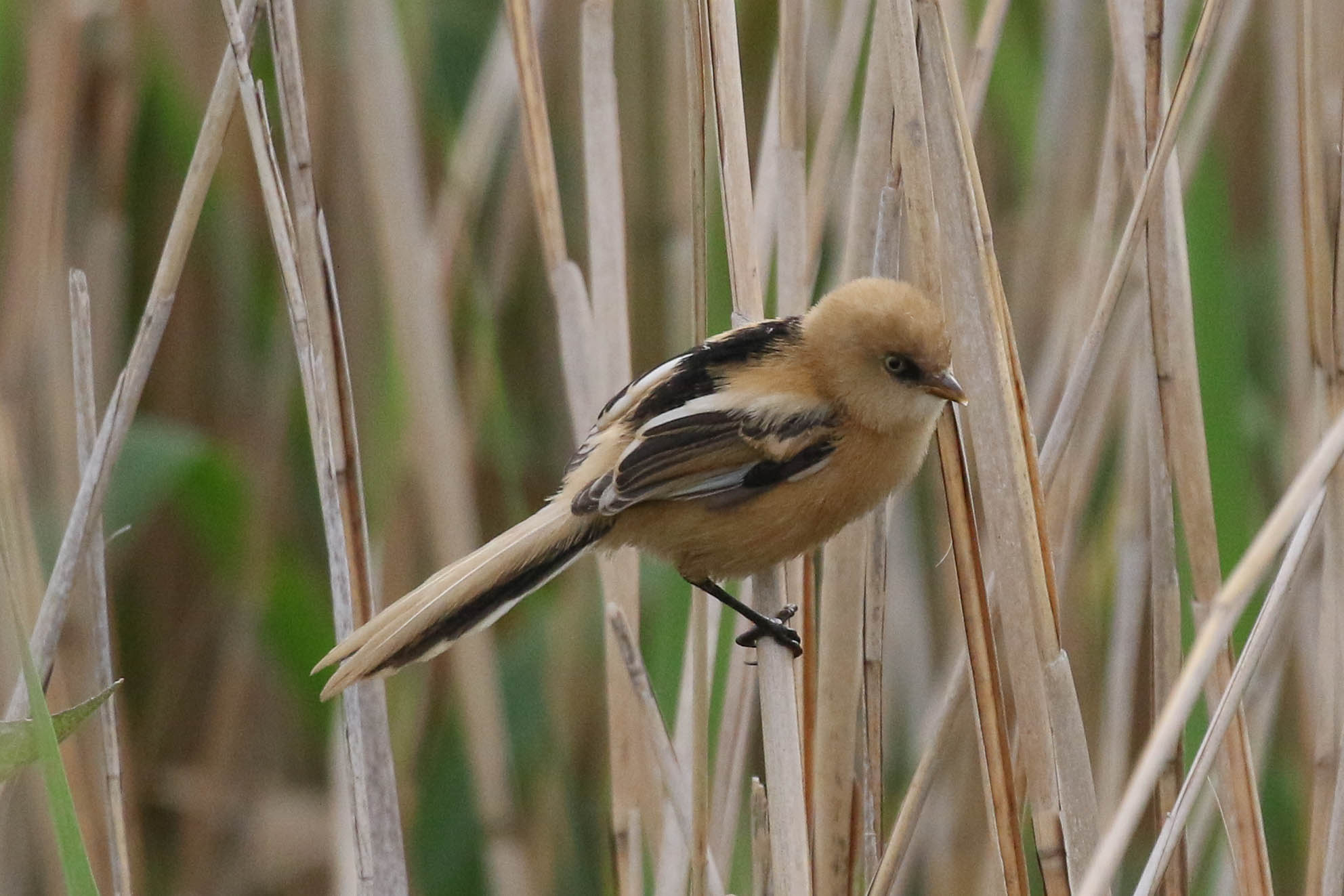
Further up, we stopped to scan the channel by the new bund through the reedbed. There were lots of ducks loafing about on the bank, Mallard, Gadwall and Shoveler, the drakes all now in dull eclipse plumage and not looking their smartest. A Muntjac walking down the bund spooked them and they all dived for the water. A couple of Little Grebes were in the channel too.
A Red Kite was hanging in the air over Willow Wood at the back of the reedbed and a male Marsh Harrier circled up out of the reeds. Then a dark chocolate juvenile Marsh Harrier came up closer and landed in a bush where we could get it in the scope and admire its burnt orange head. A Greenshank flew in from the saltmarsh behind us but disappeared out over the reserve without stopping.
A Bittern came up behind us, from the reeds out towards Thornham. It crossed over the bank and flew out over the reedbed, before dropping down in the middle. It was in the air for a long time giving us a really good chance to get a look at it.
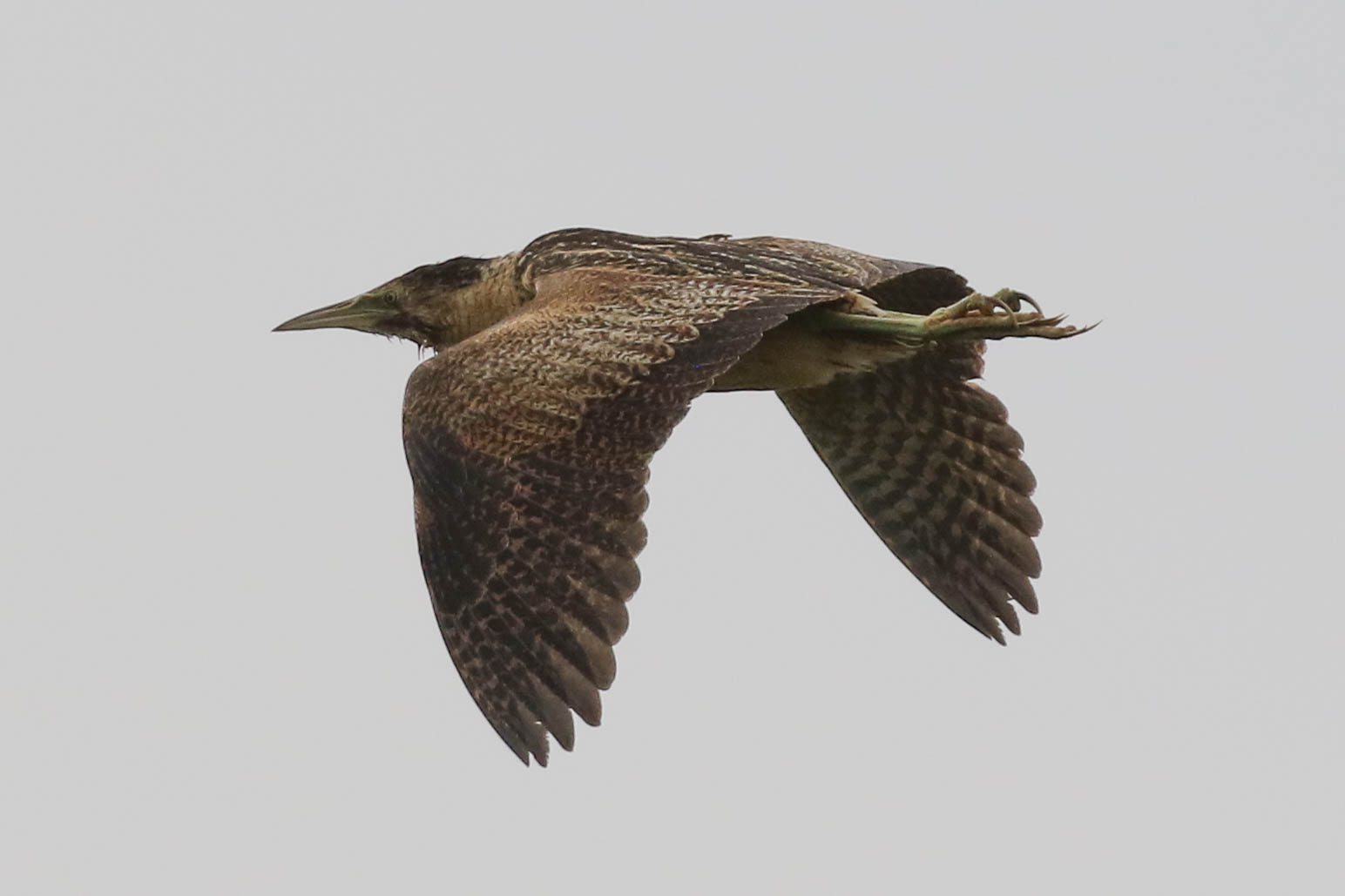
Three Spoonbills circled round over the saltmarsh and dropped down out of view in one of the channels. A little while later, a shout from one of the volunteers alerted us that they were in the air again and we watched as they flew in over the path ahead of us and out over the reserve, an adult and two juveniles. Another Spoonbill was still out on the saltmarsh, but again disappeared into one of the channels where we couldn’t see it.
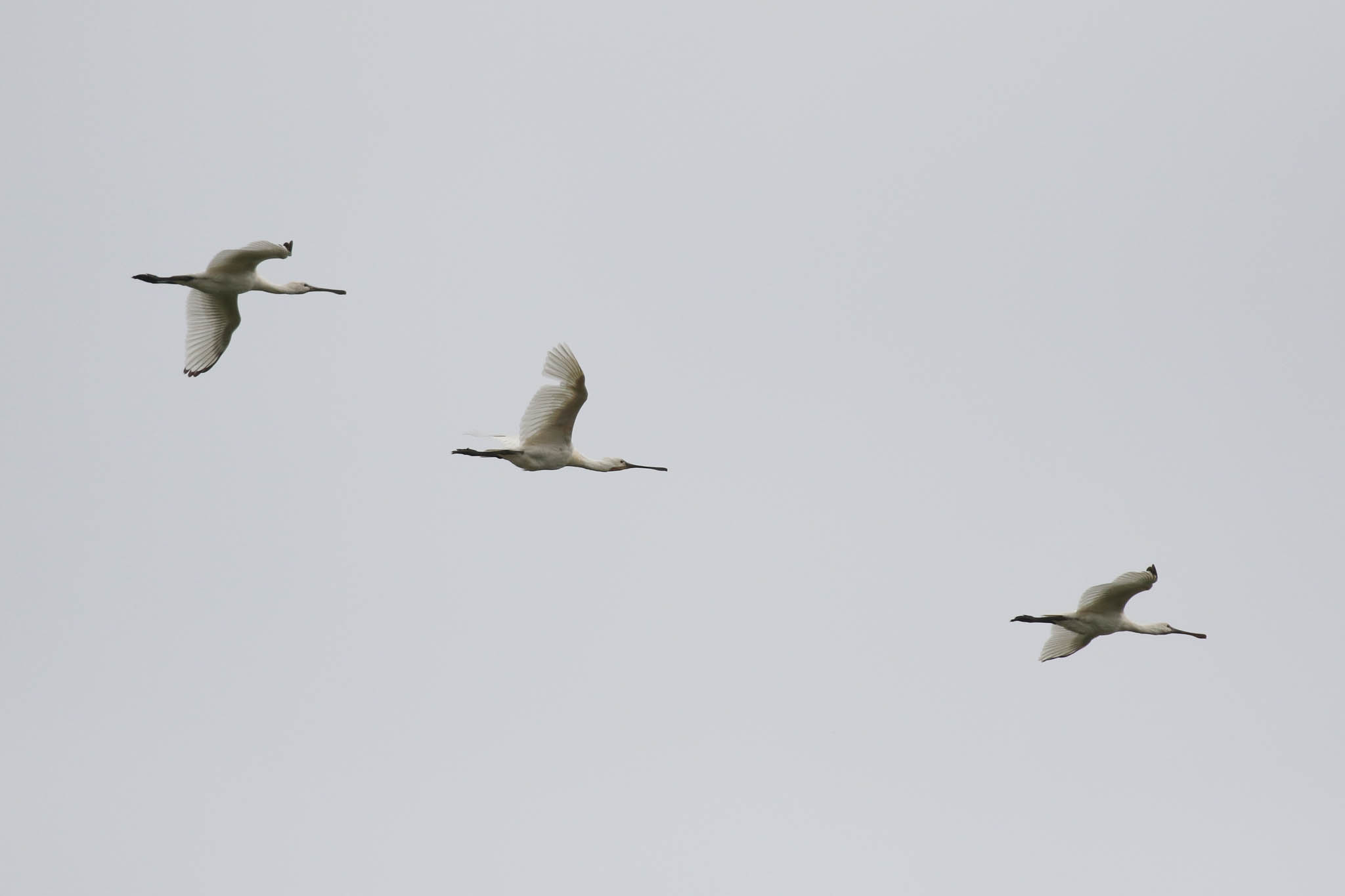
We stopped to look at the reedbed pool. Three Common Terns were flying round over the water, two adults and a juvenile. The two adults flew over the bank and disappeared out over the saltmarsh, presumably to get some food for the hungry youngsters. A Coot and a Teal on the water were both additions to the trip list.
The Bittern came up again, out in the middle of the reedbed. It flew back further and dropped down again. Just a minute or so later, it was back up again and the this time gained height, flew round in a wide circle over the reeds, then turned towards us. It flew in and went right over our heads – we nearly fell over trying to watch it! We followed it as it disappeared out towards Thornham, and dropped down into the reeds in the distance. Wow!
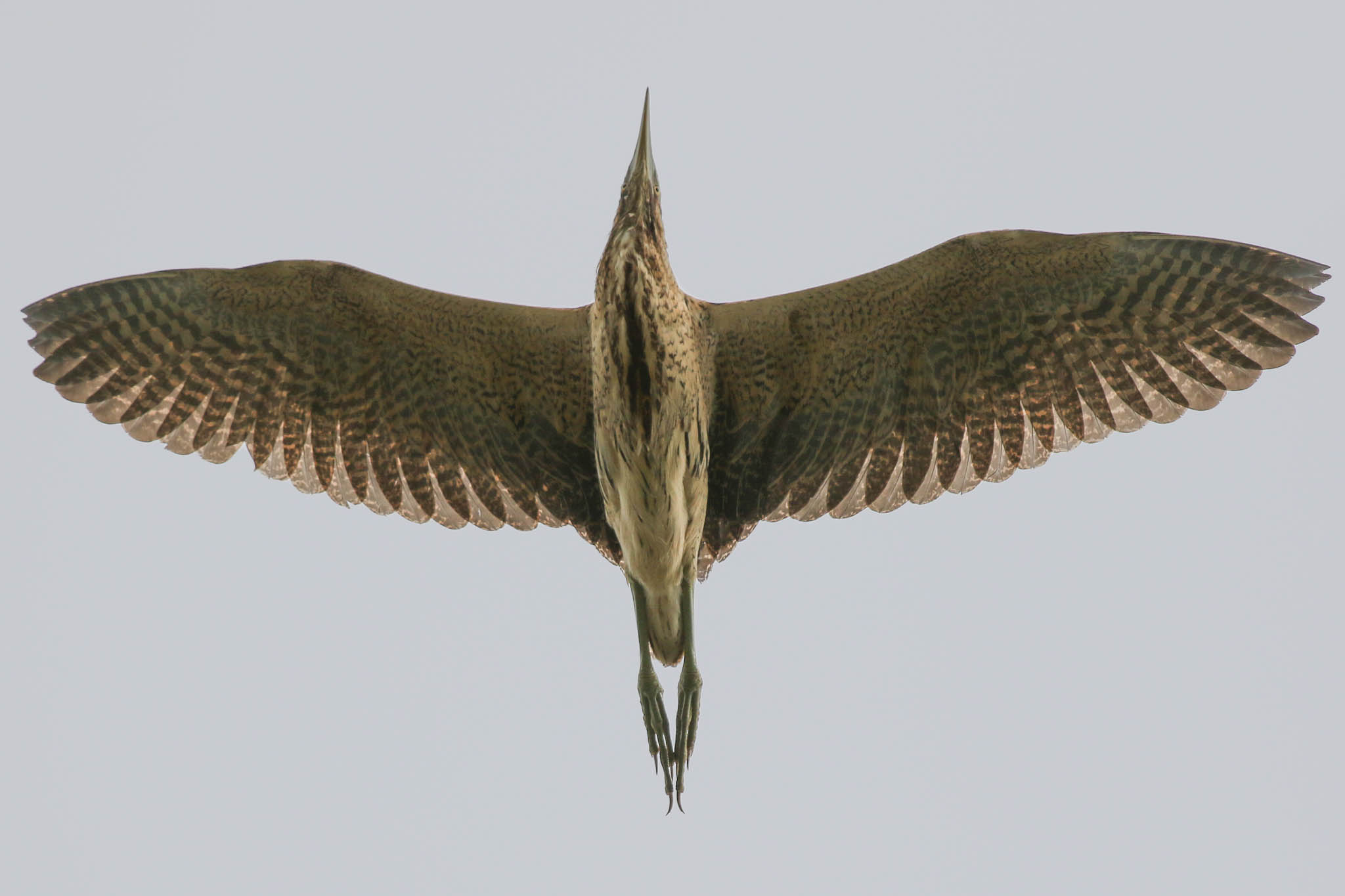
Just before Island Hide, we stopped to look at a rather tatty male Ruff, it’s neck looking rather scrawny as it has already lost its ornate ruff. It is ‘autumn’ already for these males, which play no part in raising the young once the lekking season is over, so fly here and start to moult. Another Ruff flew in and landed near the first, noticeably differently coloured – no two Ruffs are the same! The second Ruff was chased off by the first, and an Avocet then chased off the first.
We went into Island Hide, where we had a great view of the Avocets, including several well-grown juveniles with brown-tinged backs. There was a large flock of Black-tailed Godwits feeding in front of the hide too, mostly still in breeding plumage, back from Iceland already. They were chased by one or two of the Avocets too! We had a better view of a Ruff here too, on the edge island, yet another different variation.
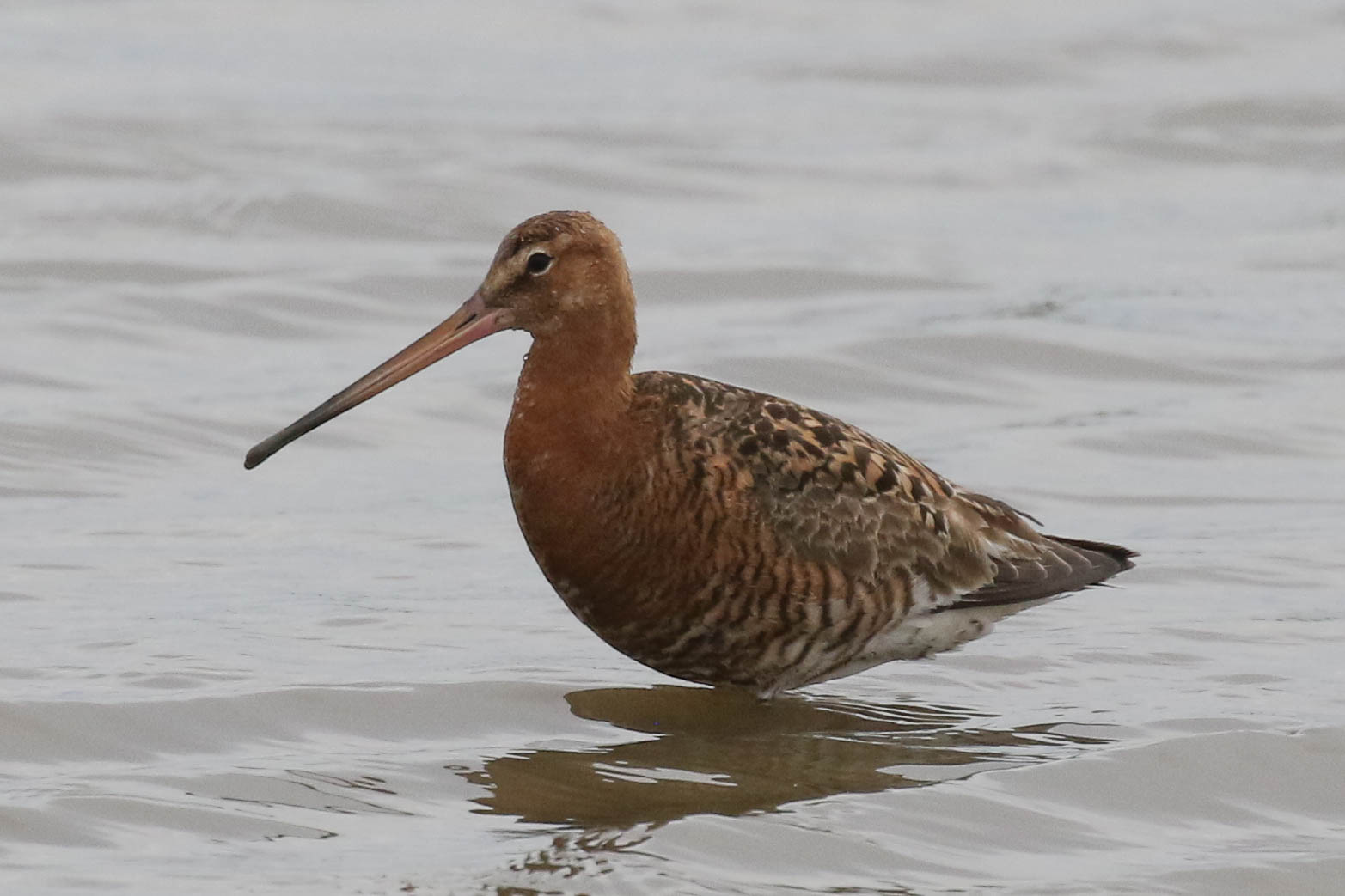
There was a lone Spoonbill on the Freshmarsh now, doing what Spoonbills like to do best, asleep on the bund at the back of the water. It did wake up briefly. Two Great White Egrets flew in over the east bank with a Little Egret, circled round and dropped down into the reeds.
There were a couple of Common Terns on one of the islands, so we got the scope on them for a better look. Lots of small gulls were loafing on the bank behind, and we had a nice comparison of adult Mediterranean Gulls with their black heads and Black-headed Gulls with their brown heads! A Sandwich Tern was in with them too, showing off its spiky crest and yellow-tipped black bill.
We had an even better view of the gulls and terns, side-on rather than head-on, from back out on the main path. We could see several Sandwich Terns now and one was looking as it it might be unwell – not unlikely as avian flu is currently decimating the nearby breeding colony on Scolt Head. Very sad.
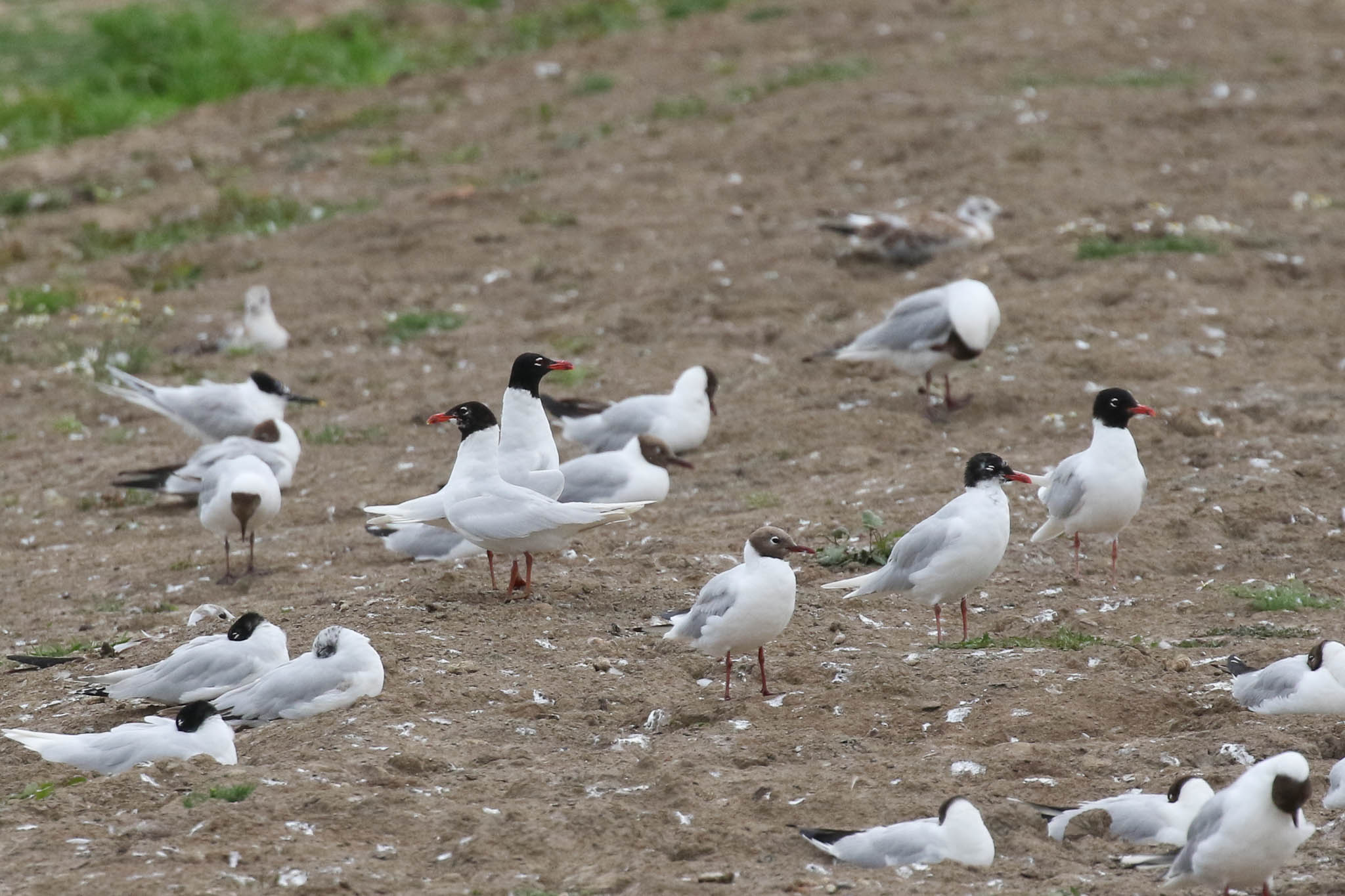
Continuing on round to Parrinder Hide, we found three juvenile Little Ringed Plovers on the bund in front of the hide and an adult further back. A single Ringed Plover was feeding on the end of one of the islands further back too. Five Spotted Redshanks were roosting over towards the East Bank. A Dunlin and one of the juvenile Little Ringed Plovers then appeared on the mud right down at the front.
A Little Gull landed on one of the islands, but was chased off by a Black-headed Gull, and took off again. It flew round, but disappeared behind one of the bigger islands and didn’t come out again. A Grey Heron was lurking right over in the far corner on the edge of the reeds.
There were several Pied Wagtails feeding on the short grass on the islands and two Yellow Wagtails appeared with them briefly, around the pile of bricks, an adult and a juvenile. There were a couple of Meadow Pipits too.
From here, we made our way out to the beach next. There were just a few Common Redshanks on Volunteer Marsh and next to nothing on the Tidal Pools today. We figured everything would be feeding out on the beach, as the tide was out, but when we got there we found a couple down on the shore walking through the mussel beds with their dog, throwing the ball for it to fetch. Needless to say there were a lot fewer birds than there had apparently been earlier!
We could still see some waders on the far end of the mussel beds but the couple were walking that way and the birds not surprisingly flushed. Some seemed to fly off east but thankfully a good number flew and landed back closer to us, so we walked down the beach for a closer look. We had some good views of Bar-tailed Godwit now, all in sandy non-breeding plumage. We compared it to the Black-tailed Godwits on the mussel beds too. Most of the Knot had flown off, but we found one still with the godwits, in grey non-breeding plumage.
A couple of Spoonbills appeared on one of the pools in the mussel beds, an adult and a juvenile. The latter was walking behind the adult bobbing its head up and down and flapping its wings, demanding to be fed – the little beggar! We lost sight of them and didn’t see what happened, but presumably the adult eventually gave in and fed it as we saw the juvenile take off and fly in up the beach and over the dunes. The adult Spoonbill resumed feeding in the pool.
There was a seal hauled out on the beach in the distance, up towards Thornham Point, and more waders up that way too. Most of the Knot which had earlier been on the mussel beds had gone up there, and we could see a big flock feeding on the wet sand. Looking through the scope, we could see several orange ones, still in breeding plumage. There were more Bar-tailed Godwits too – we could see two of those still in summer plumage too. Looking out to sea, we couldn’t see much today – a Gannet flew past out towards the wind turbines and a trickle of Sandwich Terns headed in towards Scolt.
Stomachs were starting to rumble, so we turned to head back. On the way, we stopped to look at a female Pochard with at least four or five well grown ducklings on one of the pools by the path. A Cetti’s Warbler flew up out of the vegetation on the bank and back past us, disappearing down into the reeds. A little further along, a second Cetti’s Warbler flew up from the reeds and disappeared into a sallow, where we could hear it calling.
A Comma was basking on the nettles near the visitor centre. It was time for lunch so we made good use of the tables in the picnic area. A couple of Speckled Woods were additions to the butterfly list.
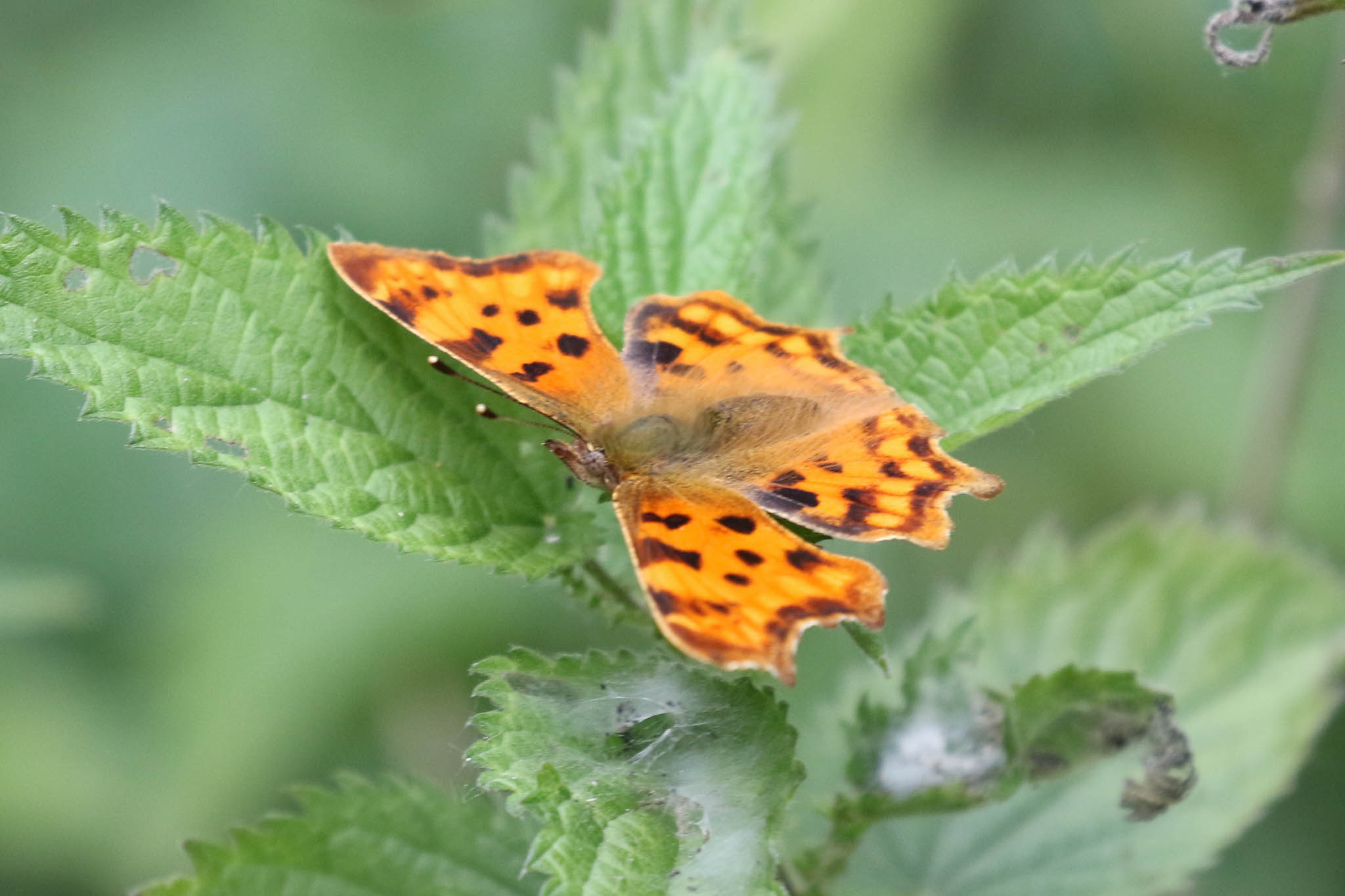
After lunch, we drove round to Snettisham. There were several Egyptian Geese on the pits on our way out. When we got up onto the seawall and looked across over the Wash the tide was still out – though it was starting to come in. There was lots of bare mud, but it was quite dry and just a scattering of Oystercatcher mostly asleep. As we walked down towards the hides, several large flocks of Dunlin flew in past us and dropped down towards the pits, along with a few Knot too.
We stopped in Rotary Hide and set up the scopes to scan through the hordes of Dunlin roosting on the islands. There had been a White-rumped Sandpiper with them here the last two afternoons, but we couldn’t see it at first. We did find a Turnstone and a Sanderling in with the Dunlin, and some nice red Red Knot (to give them their full name!), still in bright breeding plumage. More flocks of Dunlin were arriving in from the Wash all the time.
Another couple of people came in to the hide. They had apparently been here yesterday and not seen the White-rumped Sandpiper, but said it favoured the spit opposite where most of the Dunlin were roosting. There were a few Dunlin on there now and we hadn’t checked through them yet. We looked across – and there it was!
The White-rumped Sandpiper was asleep, but it was noticeably different, lacking the black belly patch which most of the Dunlin were still sporting. It was hard to pick out at first, not helped by a bit of heat haze, but after a while it was disturbed by an Egyptian Goose walking across the island and at that point became a bit easier to see. Eventually everyone got a good look through the scope.
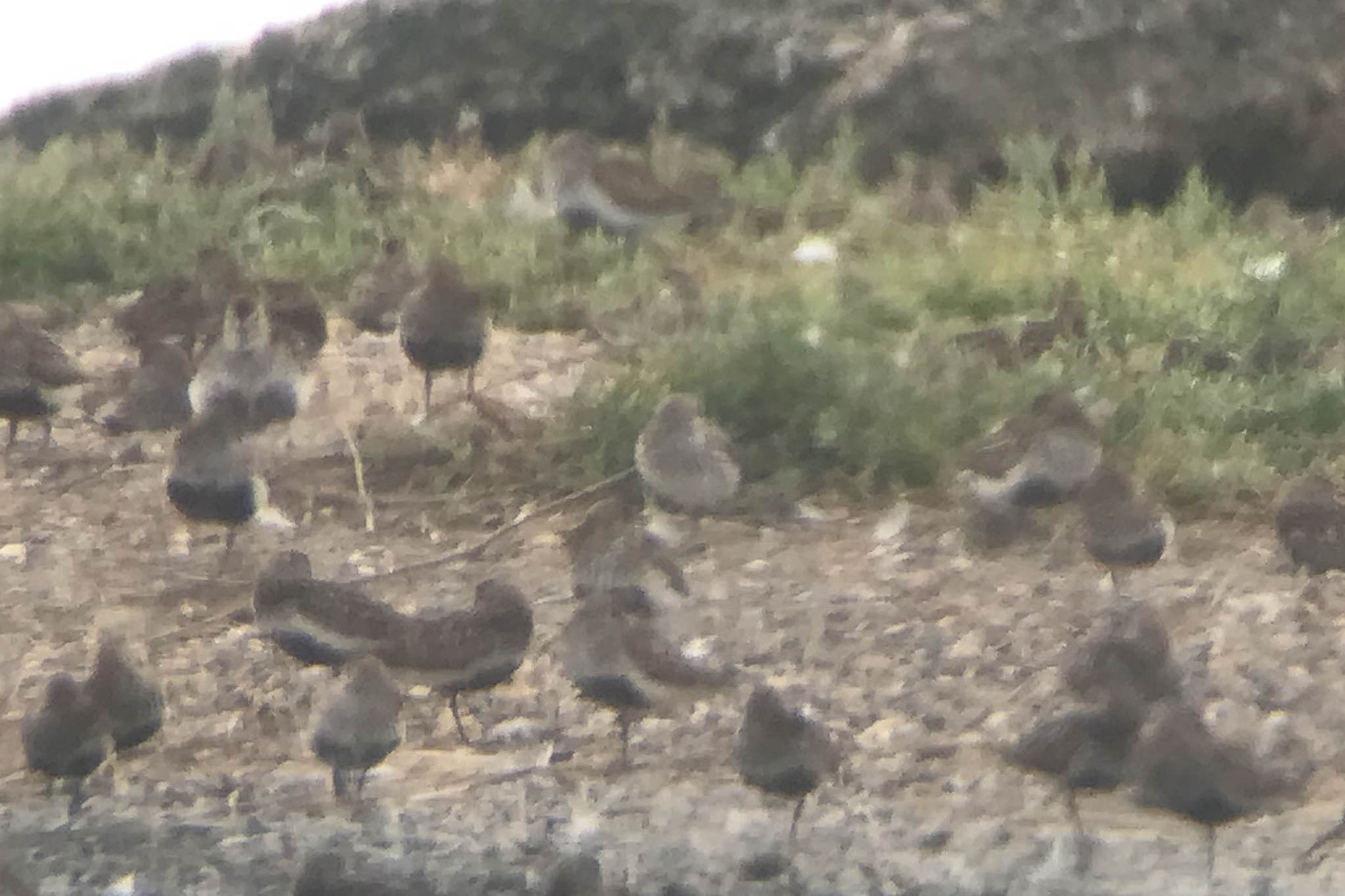
Mission accomplished, we could relax a bit now and see what else we could find. We walked on down to Shore Hide and as we went in a Common Sandpiper flew across in front calling, and landed briefly on the shingle on the near edge of the water out to one side.
There were seven Spotted Redshanks roosting in among the Cormorants out on the rocks in the middle, one still almost in full breeding plumage, black with just a few small white patches. Another Spotted Redshank on one of the islands further up the pit made eight in total, which is what had been reported here earlier.
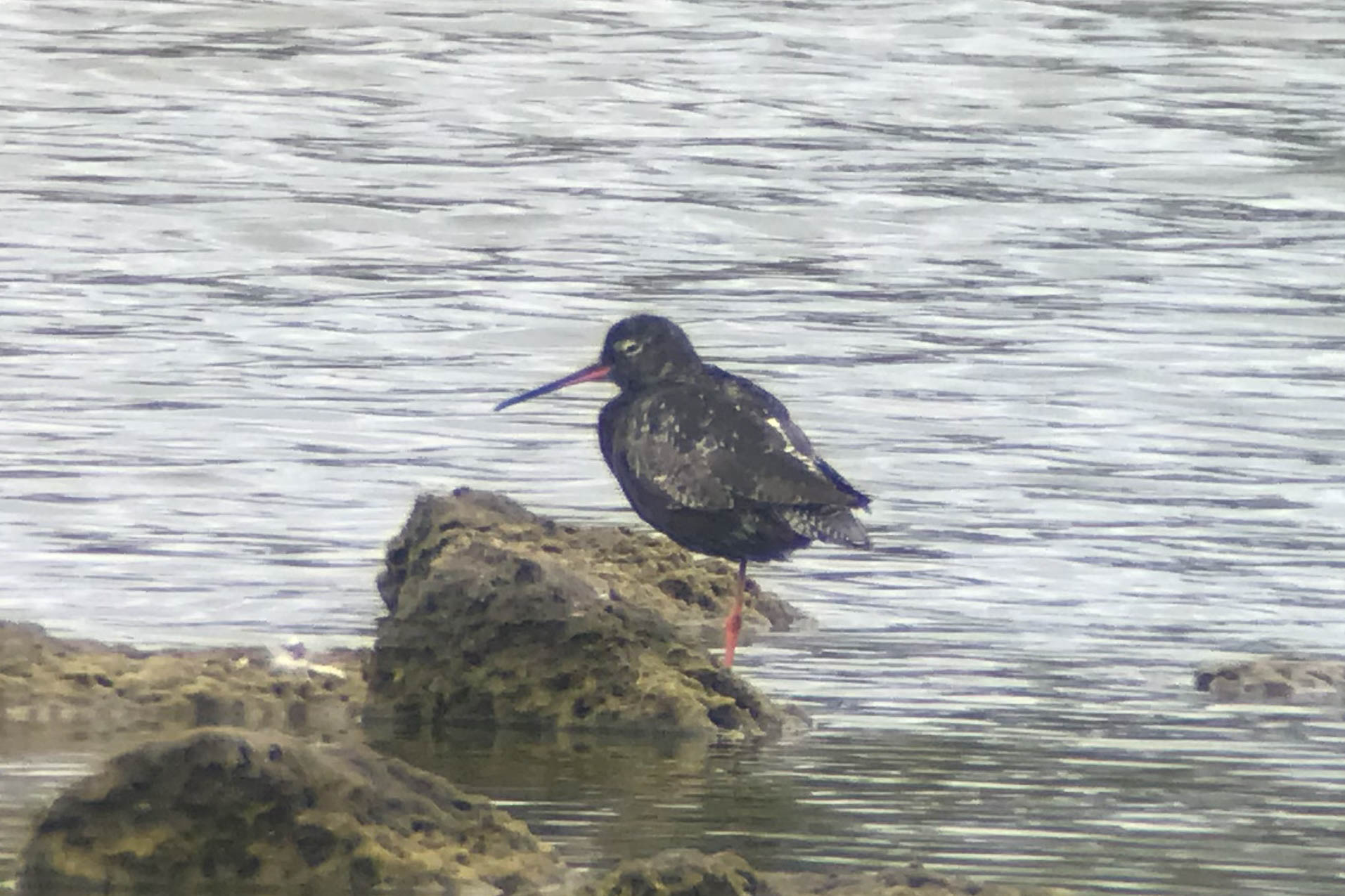
Lots of Black-tailed Godwits were roosting on the shingle bank at the back and there were two feral Barnacle Geese on the pit too. Several pairs of Mediterranean Gulls nest here, and scanning the islands we found several smart scaly juveniles of various sizes and ages.
We made our way down to South Hide next. A pair of Stonechats were perched on the small suaeda bushes, dropping down to the short turf to look for food. A Skylark flew up from the ground and landed on a teasel head in front of us, so we got the scope on that too.
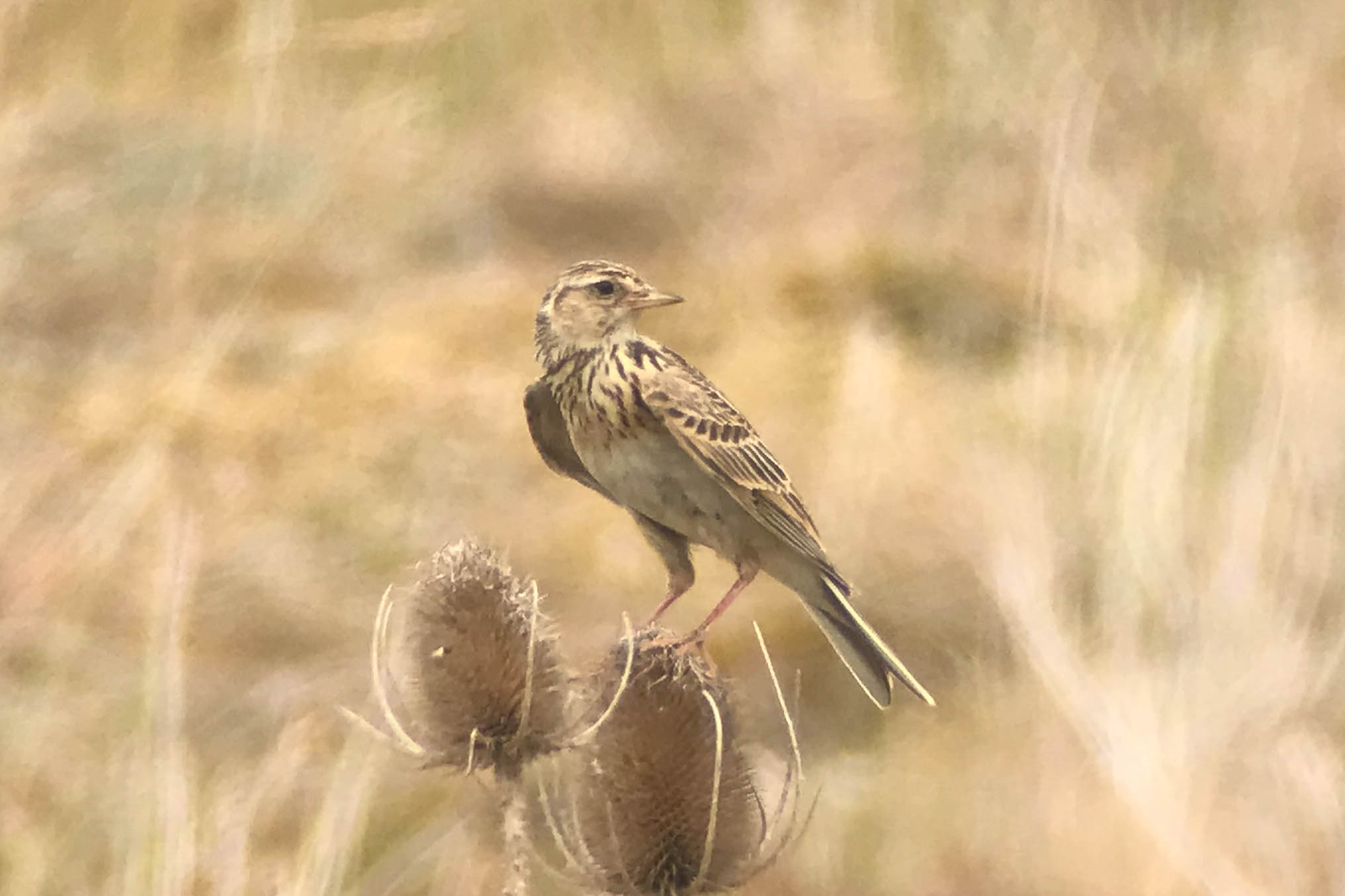
Form the hide, we could see lots of Dunlin roosting on the islands right in front, giving us some really nice views. There were several small groups of Knot in among them and a few Black-tailed Godwits, giving us a good size comparison. A single Turnstone appeared with them too. A juvenile Redshank was feeding on the edge of the water just below us.
There were lots of Common Terns on the islands further back and repeatedly got spooked and erupted calling. They kept taking most of the waders up with them. We scanned to see if we could find any raptors which might have provoked them, but it seemed to be a false alarm.
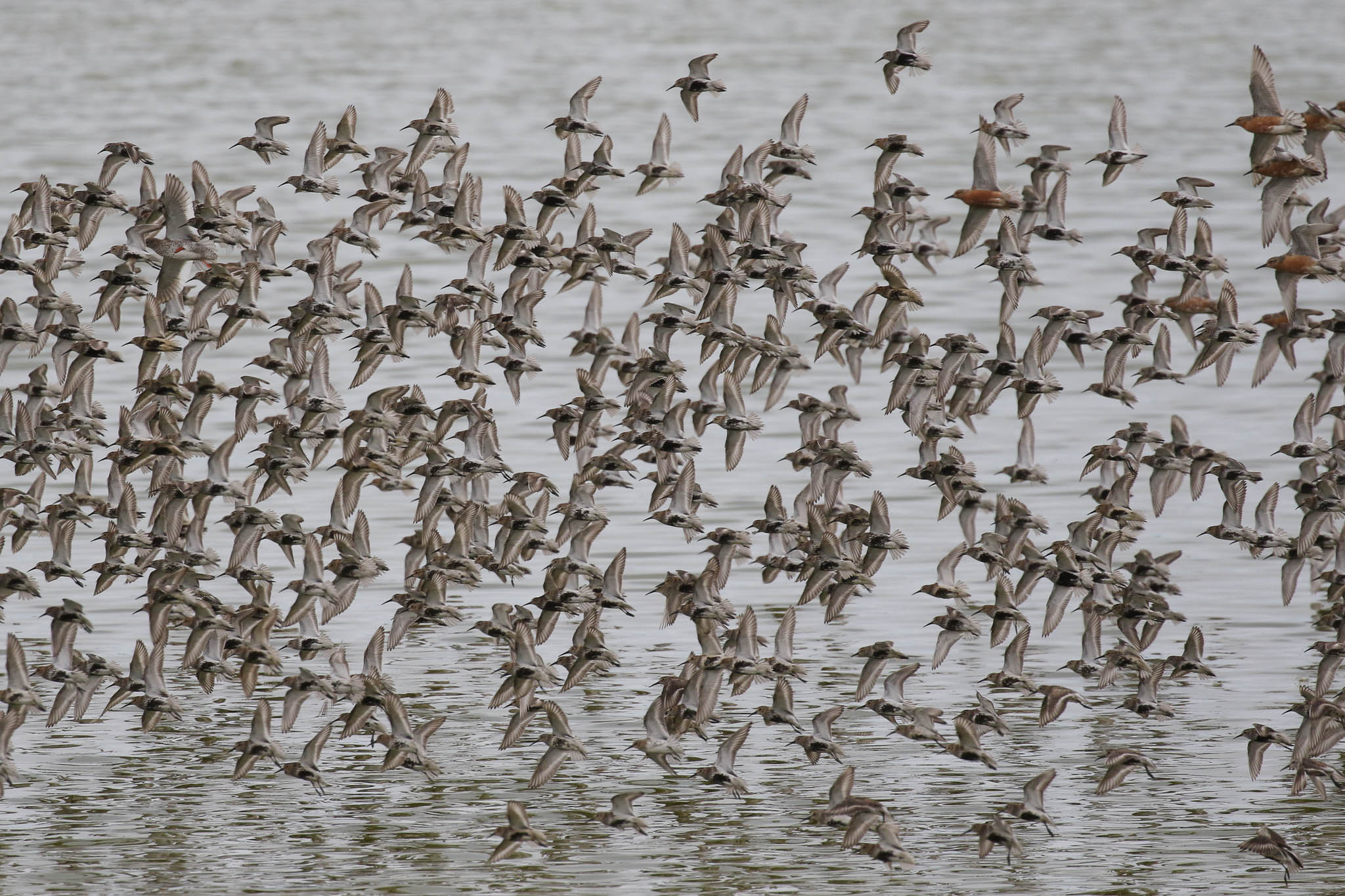
It started spitting with rain, so we waited for it to stop, which it did fairly quickly. It was time to start making out way back. Out on the edge of the Wash, there were a couple of Linnets with the Stonechats now, including a nice red-breasted male. We flushed several Meadow Pipits from the grass ahead of us. We had a quick look in Rotary Hide as we passed – there were a couple of people in there looking, but there was no sign of the White-rumped Sandpiper now. We had been lucky!
A little further up, we heard a Turtle Dove purring in the distance. We walked up the entrance track a short way and scanned the trees, and picked it up perched on the edge of a large willow on the other side of the pit. Through the scope, we had a good view of its rusty scaled back. It took off and launched into a display flight, flying up, then gliding round in a wide arc over the pit, before flying off inland. As we made our way back, another Turtle Dove flew off over the pit and disappeared off back towards the car park.
A nice way to wrap up a very successful first day. More tomorrow!
